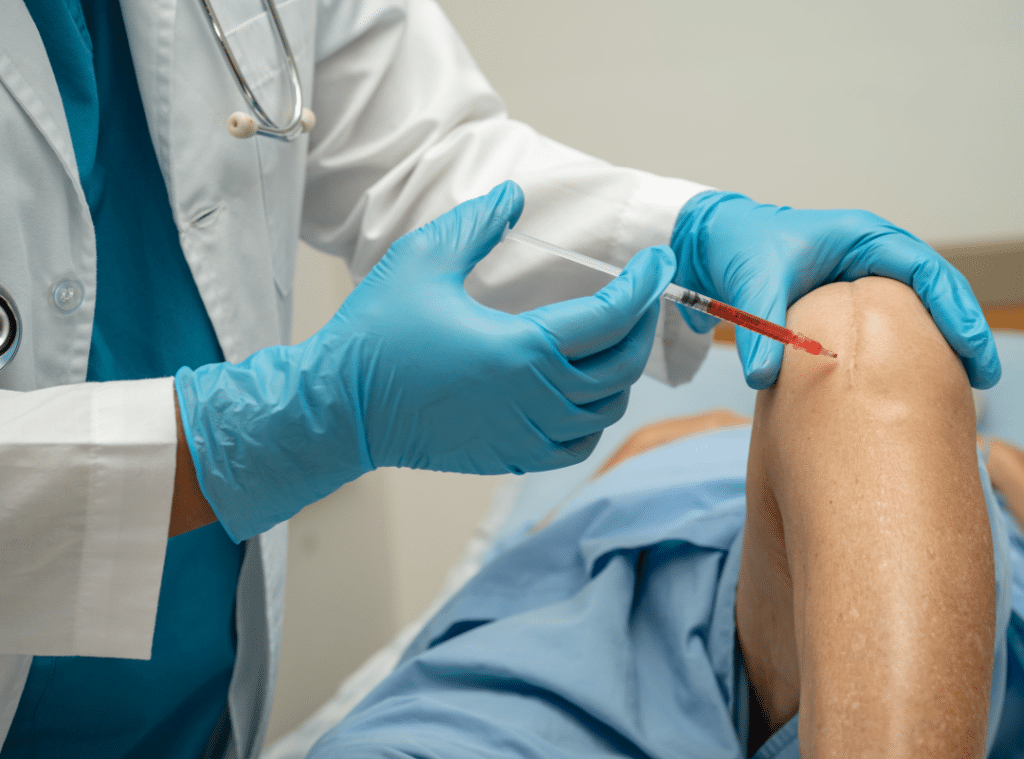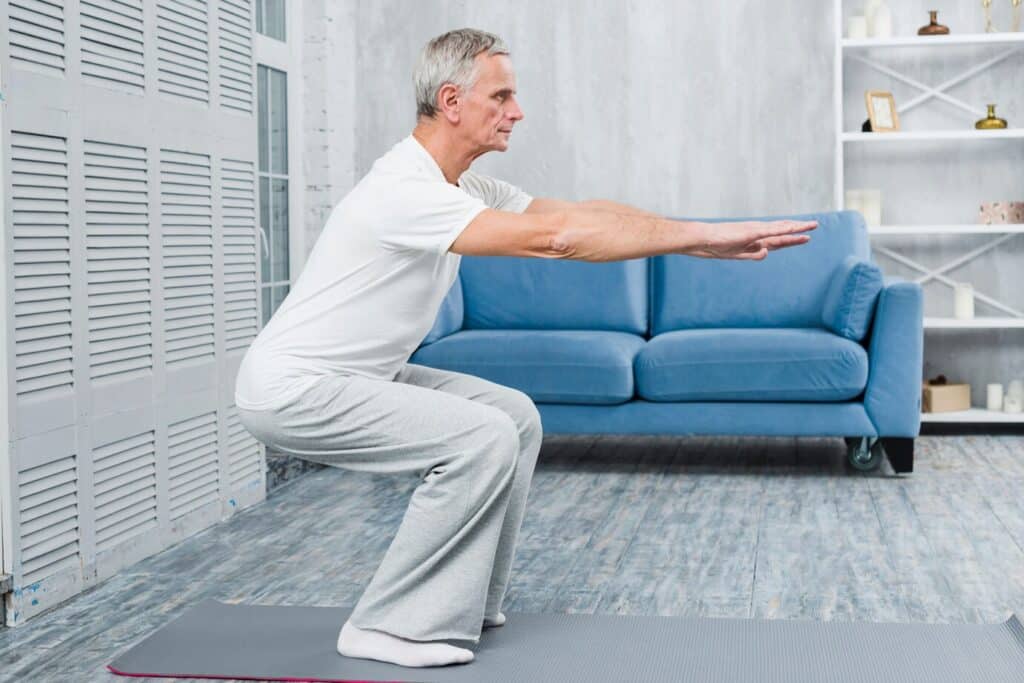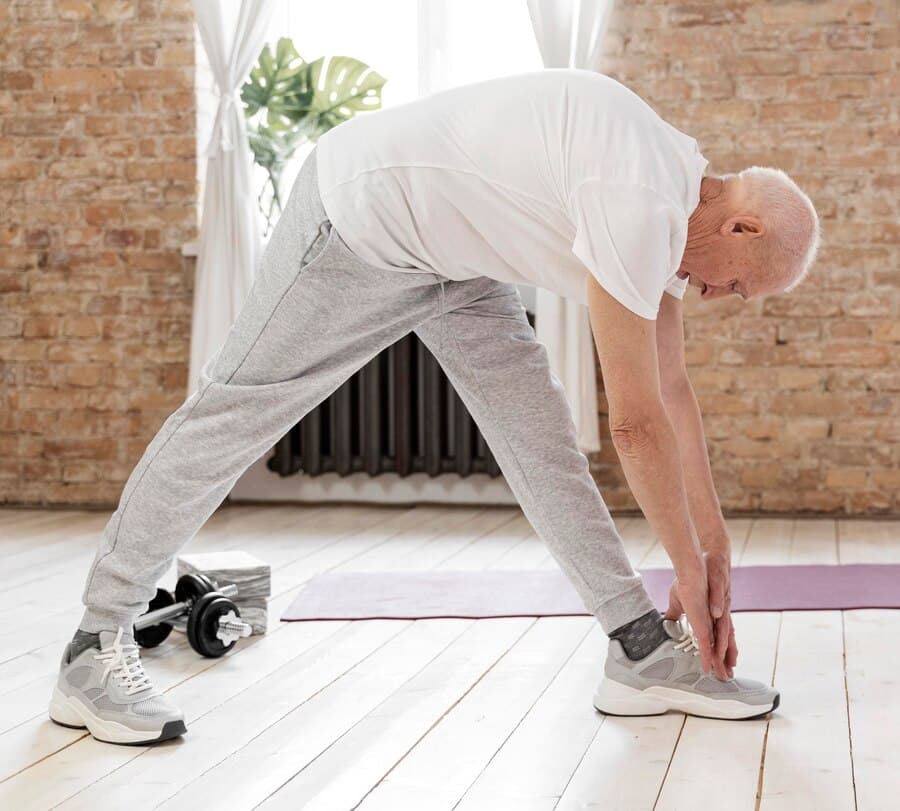As we age, muscle strength and stability often decline—especially in the legs. If you’ve noticed growing difficulty walking, standing for long periods, or maintaining balance, you’re not alone. Many older adults struggle with leg weakness, but that doesn’t mean it has to limit your life.
This guide offers actionable treatment for weak legs in the elderly that includes nutrition, exercise, medical strategies, and lifestyle adjustments. Whether you’re a senior yourself or supporting an aging loved one, you’ll find comprehensive solutions to restore strength and independence.
Learn more from the experts at Westmont of Cypress, a senior living community that offers personalized wellness support.
Understanding the Causes and Symptoms
Leg weakness in older adults can stem from multiple underlying conditions. Some of the most common causes include:
- Nerve damage or neuropathy, especially related to diabetes
- Poor circulation, often resulting in fatigue or numbness
- Muscle disorders or age-related muscle loss (sarcopenia)
- Medication side effects that affect muscle strength
- What deficiency causes weakness in the legs, often due to low levels of vitamin D, B12, iron, or magnesium
Symptoms can range from mild fatigue to serious mobility limitations. Early signs may include difficulty rising from a seated position, leg cramps, or frequent falls. It’s crucial to act early to prevent further complications and to support healthy aging.
One effective approach is to engage in daily leg exercises for seniors that help improve strength and balance.
Nutrition: What to Eat for Weak Legs in the Elderly
Eating the right foods is foundational to building muscle strength. If you’re wondering what to eat for weak legs in the elderly, here’s where to start:
Key Nutrients to Rebuild Strength
- Lean Proteins – Chicken, turkey, fish, eggs, beans, and low-fat dairy help with muscle repair.
- Vitamin D & Calcium – Essential for bone and muscle health. Fortified cereals, dairy, and fatty fish are excellent sources.
- Vitamin B12 & Iron – These nutrients prevent fatigue and support nerve function. Include leafy greens, red meat, and fortified grains.
- Magnesium & Potassium – Help with muscle contraction. Found in bananas, nuts, seeds, and avocados.
- Water – Even mild dehydration can affect muscle performance. Aim for 6–8 glasses per day.
Need personalized help? Customized meal plans for seniors can ensure you’re getting the right nutrition to strengthen your legs and support your lifestyle.
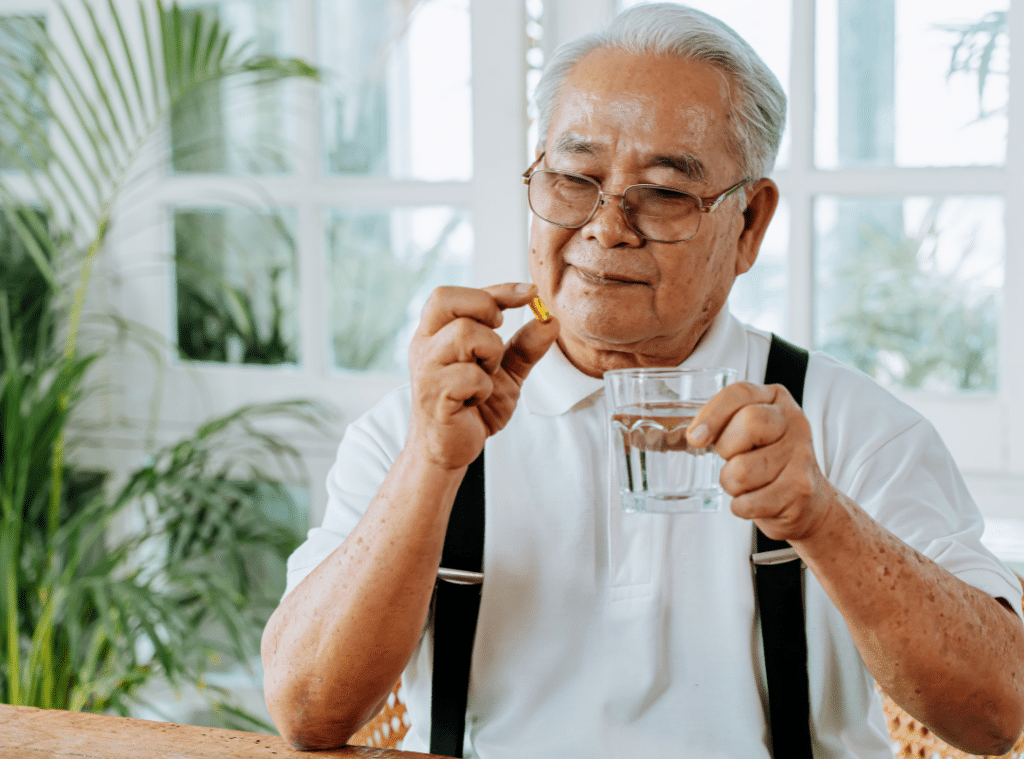
Supplements for Weak Legs in the Elderly
In addition to a balanced diet, supplements for weak legs in the elderly can help fill in any nutritional gaps. Always consult with your physician first, but common supplements that support muscle health include:
- Vitamin D – Especially important for those with limited sun exposure.
- Magnesium and Calcium – Critical for muscle contractions and overall strength.
- Creatine – May enhance muscle function in older adults.
- Omega-3 Fatty Acids – Support overall inflammation control and joint health.
These supplements can work alongside diet and exercise to significantly improve mobility and reduce leg fatigue. To learn more about age-appropriate supplements, check out NIH’s senior nutrition guide for helpful insights.
Exercises for Weak Legs in the Elderly
Exercise is one of the most effective treatments for weak legs in the elderly. It not only strengthens leg muscles but also improves circulation, balance, and coordination.
H3: Top Exercises for Building Strength
- Chair Squats – Strengthen your thighs and hips using only a sturdy chair.
- Seated Leg Raises – Simple yet effective for engaging leg muscles.
- Heel-to-Toe Walking – Enhances balance and coordination.
- Calf Raises – Boosts lower leg muscle tone.
- Gentle Yoga or Tai Chi – Increases flexibility and muscle control.
Aim for at least two 20–30 minute sessions per week. Start small and gradually increase intensity. Explore targeted balance exercises to reduce your fall risk further and regain confidence in your movements.
For more tips, SilverSneakers offers free senior-friendly workouts for Medicare-eligible individuals.
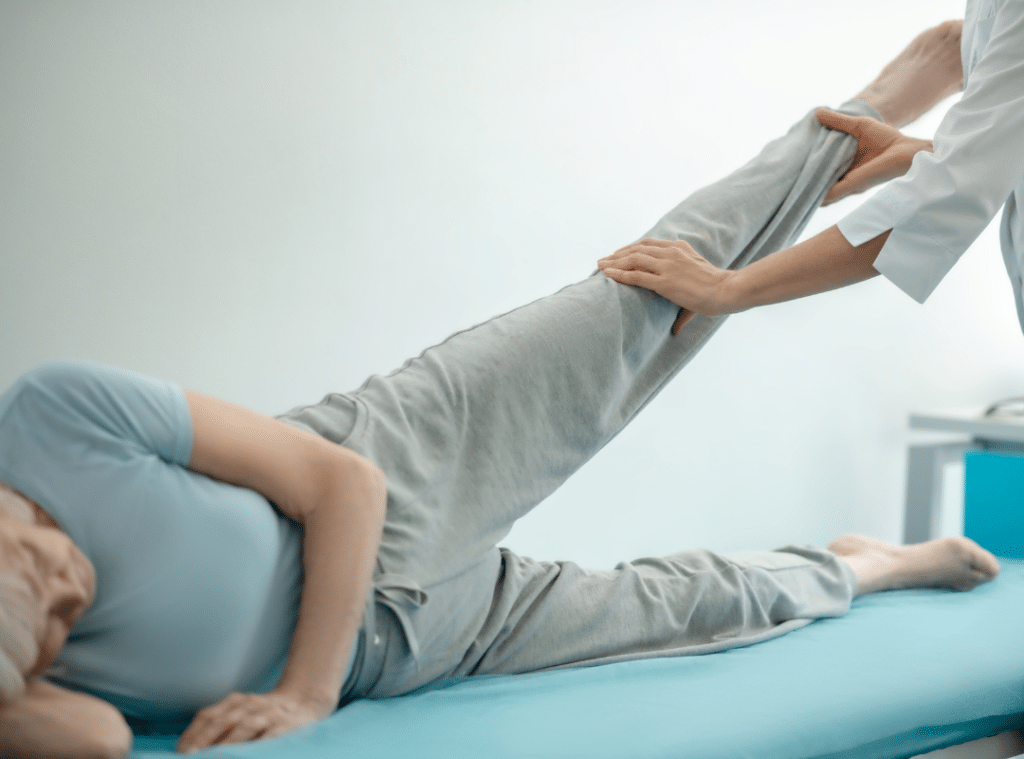
Medical Treatment Options for Chronic Weakness
When nutritional changes and exercise aren’t enough, medical intervention may be necessary. Here are several common treatment options for weak legs in the elderly under medical supervision:
H3: Medication and Physical Therapy
- Physical Therapy – A personalized rehab plan can target the exact muscles you need to strengthen.
- Anti-inflammatory Medications – Help relieve pain and swelling in muscles or joints.
- Muscle Relaxants – Reduce spasms and stiffness.
- Pain Management Injections – For severe conditions like arthritis or sciatica.
Routine check-ups can help determine if an underlying condition—like arthritis, diabetes, or neuropathy—is contributing to your symptoms. Treating these root causes can significantly enhance your overall function. Learn more about underlying health conditions that lead to weak legs.
Lifestyle Changes That Promote Independence
While medical treatment is important, lifestyle plays an equally crucial role in managing leg weakness. Here are some practical adjustments you can make today:
- Use mobility aids like walkers or canes to reduce fall risk.
- Create a safe home environment—install grab bars and non-slip mats.
- Stick to a regular exercise and nutrition routine.
- Participate in fun fitness activities that keep you engaged and motivated.
- Join a community program or group fitness class for seniors to build routine and social interaction.
These simple changes—when done consistently—can restore confidence and support independent living.
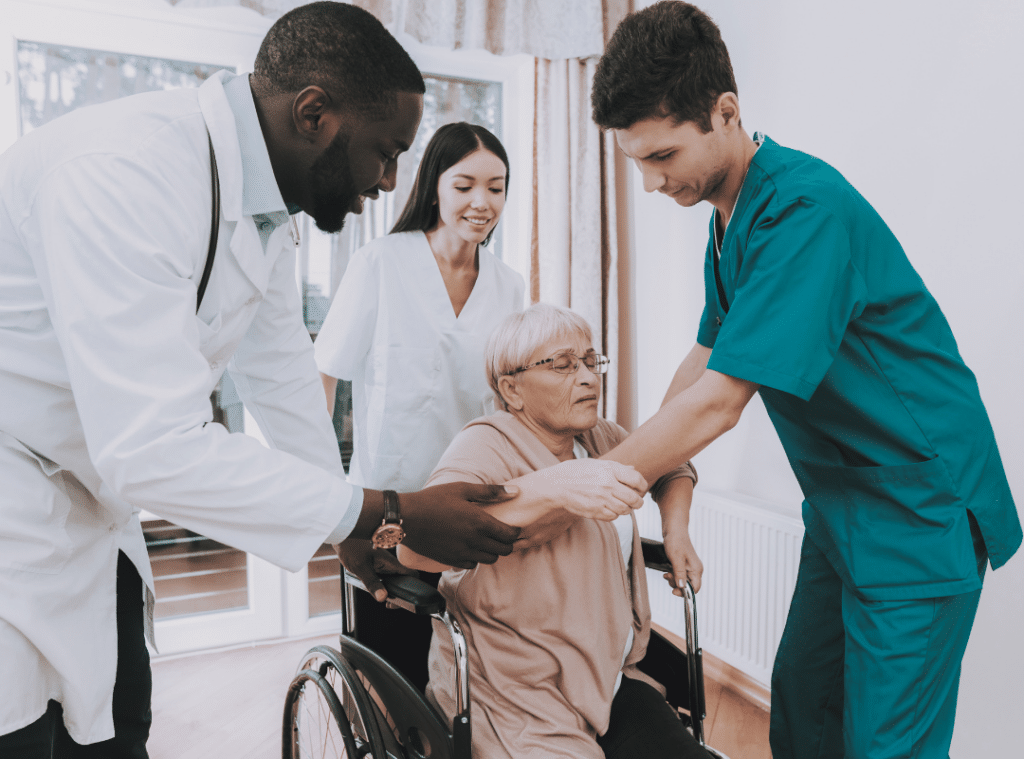
Take the First Step Toward Stronger Legs
You don’t have to live with leg weakness. With the right treatment for weak legs in the elderly, including a proper diet, targeted exercises for weak legs in the elderly, and effective supplements for weak legs in the elderly, you can reclaim your strength and enjoy a more active lifestyle.
If you’ve ever wondered what to eat for weak legs in the elderly or what deficiency causes weakness in the legs, the answers lie in a holistic approach combining diet, movement, and medical care.
Let the team at Westmont of Cypress help you take that first step toward improved mobility. From custom wellness plans to personalized care, they’re ready to support your journey every step of the way.
📞 Call now at 714-252-7144
📍 Schedule a Tour and see how our care can transform your mobility and lifestyle.
Compare The Costs of Senior Living vs Staying at Home
How Do The Costs Of Moving Into A Quality Senior Care Community Compare With The Costs Of Staying At Home?
Frequently Asked Questions
What is the natural remedy for weak legs?
Natural remedies for weak legs often focus on improving circulation, strengthening muscles, and boosting overall health. Regular walking, yoga, or light stretching can help keep the muscles active without overstraining them. A balanced diet rich in vitamins D, B12, and calcium supports bone and muscle strength. Staying hydrated and getting enough rest are also simple yet effective remedies for reducing weakness.
What causes legs to feel weak?
Leg weakness can result from several factors, including poor circulation, nerve issues, or muscle fatigue. Common causes also include dehydration, lack of essential nutrients, or underlying medical conditions such as diabetes or arthritis. Sometimes, overexertion or prolonged inactivity may trigger weakness in the legs. Identifying the root cause is important for finding the most effective treatment.
How to recover from leg weakness?
Recovering from leg weakness requires a mix of rest, exercise, and proper nutrition. Gentle exercises like walking, swimming, or resistance training can help rebuild strength over time. Ensuring a diet rich in proteins, vitamins, and minerals supports muscle recovery and endurance. It is also wise to consult a healthcare professional to rule out or manage underlying conditions that may be contributing.
How to make a weak leg stronger?
To strengthen a weak leg, consistency with targeted exercises is key. Activities such as leg raises, squats, and resistance band workouts help build muscle and stability. Proper nutrition, particularly with protein-rich foods, supports muscle repair and growth. Gradually increasing activity levels while avoiding overexertion ensures safe and steady progress.



